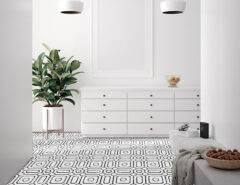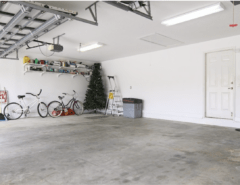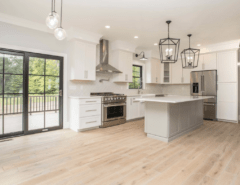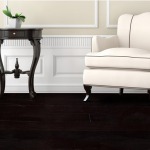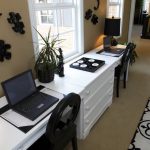Are you curious to know if laminate floors need to acclimate? We’re going to touch on everything you need to know about acclimating laminate flooring, including the laminate flooring acclimation period, storage guidelines, top tips, and more.

Why Does Laminate Flooring Need to Be Acclimated?
Acclimation is essential with laminate flooring. It’s simply the process of letting the laminate adjust to a room’s temperature and humidity before installation. You might be wondering if this is really necessary, and when it comes to laminate, it absolutely is.
Humidity and temperature can both influence laminate flooring, causing it to expand and contract after installation. That’s why it’s essential to acclimate laminate before installing it.

By placing the laminate in the room where you plan to install it, the laminate can naturally contract and expand, so you install the proper amount of laminate and don’t have to worry about issues post-installation.
6 Steps for Acclimating Laminate Flooring
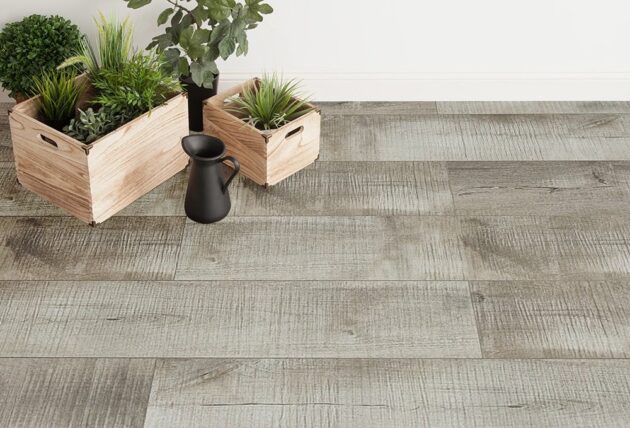
Essentially, acclimating laminate floorings is just about putting the flooring in the room before the installation. How long should you leave it there? What are the other things that are important to keep in mind when acclimating laminate flooring?
The following six steps will walk you through the process:
1. Read the Manufacturer’s Instructions
This one might sound like an obvious step. However, too many people skip it. When it comes to laminate, it’s crucial to read the manufacturer’s instructions first. Each type of laminate flooring comes with slightly different acclimation needs and instructions. When in doubt, always check the manufacturer’s instructions.
2. Check the Subfloor for Moisture
For best results, you need to complete a prong test to ensure there isn’t too much moisture in the subfloor. For timber subfloors, you want the moisture level to be no more than 12% MC (Moisture Content). If you’re using a concrete moisture meter, you want to aim for no more than 3% MC.
Why is this step necessary? If the moisture content of the subfloor is much higher than these ranges, you risk having issues with expansion, which can’t always be fixed. In fact, too much moisture can leave you with permanently damaged laminate, and no one wants that.
3. Monitor Room Humidity
There’s a reason humidity comes up a lot in conversations about laminate. If the humidity of a room is too high, you shouldn’t use laminate. How high is too high?. In general, for laminate to be a viable flooring option, the humidity level needs to fall between 35-65% (RH scale). As always, check with the manufacturer for their recommendations for humidity levels for best results.
To check the humidity of a room, you can purchase a hygrometer, a tool that’s available at most major DIY stores.
4. Ensure an Adequate Temperature
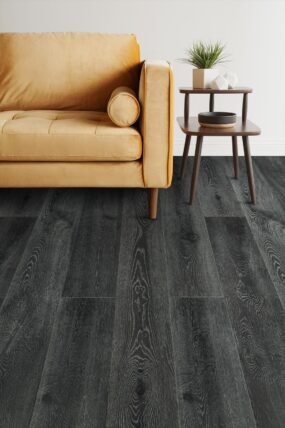
Temperature can also affect laminate floors. If it’s too cold, laminate can contract. If it’s too hot, the laminate can expand. If temperature fluctuations happen frequently, it can cause expansion and contraction, leading to cracking, curling, peeling, and more.
That’s why it’s essential to only use laminate in rooms where the temperature will stay relatively constant. It’s not suitable for outdoor areas or rooms without a controlled climate. Again, always refer to the manufacturer’s specific temperature guidelines first. In general, laminate needs to be installed in a room where the temperature is between 65-85 degrees Fahrenheit.
5. Store Sealed Laminate Flooring Packs Correctly
You need to store the laminate correctly during the acclimation period. You want to keep the laminate in the sealed packs in the room where you plan to install it. You might be tempted to place the flooring upright to save space, but don’t do it. Storing the laminate upright can cause the flooring to bow, making it challenging to install.
Be careful with under-floor heating. You want to make sure each pack is stored on its own and is lying flat on the floor. The heating system should be running at a comfortable temperature for at least 48 hours.
6. Understand How Long to Acclimate Laminate Flooring
So, how long do you have to let laminate flooring acclimate? As always, refer to your manufacturer instructions for the best results.
In general, laminate flooring needs to acclimate in the room for at least 48 hours. If you want to be extra cautious, you can go for up to 96 hours.
The Best Way to Buy Durable Laminate Flooring

Not all types of laminate flooring are created equally. You will want to choose a high-quality laminate from the beginning to make sure you end up with the best results.
At BuildDirect, we specialize in bringing you the best flooring options on the market at a price point you can afford. Plus, if you become a PRORewards member, you gain access to all kinds of perks, like 5% credit, unlimited samples, on-site delivery, and more. Become a PRO today!.












